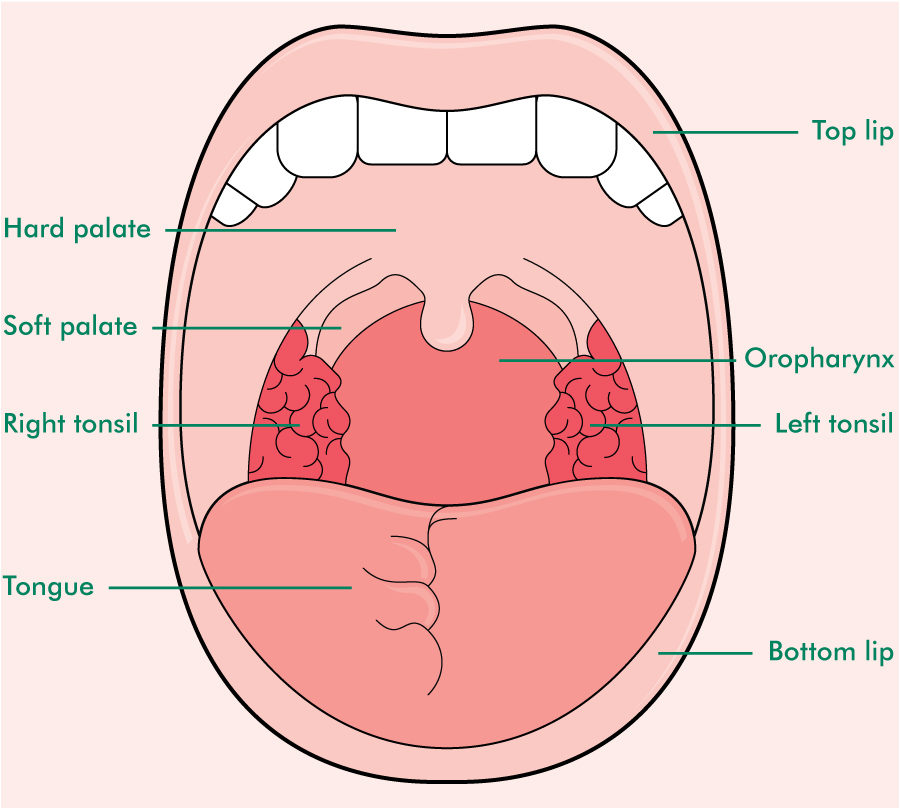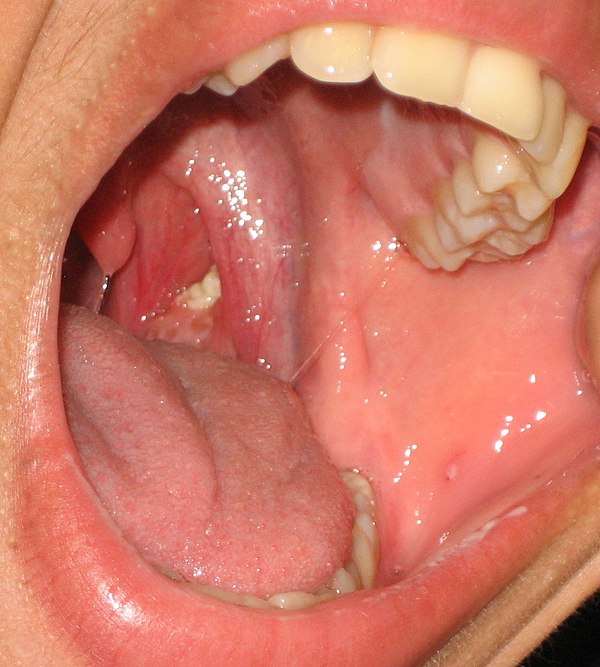Ever heard of tonsil stones? They’re these little foul-smelling, overall disgusting balls of yuck that form within the tonsils. Some people (to my amazement) love getting them so they can get the satisfaction of removing them. Others (like myself) despise them with all their being.
If you’ve heard about them recently or happen to come across one of those ungodly tonsil stone removal videos on a late-night YouTube binge, you’re probably curious as to whether or not you have tonsil stones yourself. Although tonsil stones are quite common, they can sometimes be difficult for people to identify.
If you’re having trouble figuring out if you have tonsil stones or not, don’t worry! Here’s how to check for tonsil stones:
First: Refer To This Diagram!

If you have tonsil stones, the symptoms will come from around the tonsil area. It’s important to take note of where the tonsils are in your mouth in order to properly identify tonsil stones.
Common Tonsil Stone Side Effects:
Symptoms of tonsil stones include:
- The sensation that something is stuck in your throat
- Difficulty swallowing
- Swollen tonsils
- Throat itching
- Ear pain
- Itchy ears
- Bad taste in mouth
- Bad breath even with a consistent and thorough dental hygiene routine.
These symptoms may not be present all at once.
What Do Tonsil Stones Look Like?
Tonsil stones, or Tonsilloliths, are small, stone-like accumulations of bacteria, mucus, food particles and other debris. They range in color, but are most often white, off-white, creamy or yellow in color.
The common appearance of a tonsil stone can be seen in the following photo:

Tonsil stones are found lodged within the crypts of the tonsils (as seen in the photo above), though they sometimes dislodge on their own and may be accidentally swallowed, coughed up or found on the tongue.
Tonsil stones vary in size, but are usually around the size of a pea or smaller. In some cases, tonsil stones can grow to unusually large sizes.
How To Check For Tonsil Stones:
Use A Light
Open your mouth and say “Ahhh!”. Shine a light into your mouth and look in the mirror. You may see one or more white stones poking out of crypts in your tonsils. Those are tonsil stones!
*Note that tonsil stones are often hidden within the tonsil crypts, so you may still have them even if you can’t see them.
Swallow
Try swallowing and take notice of how your tonsil area feels. You may feel some discomfort or as if something is stuck. You may also feel a slightly sharp feeling around your tonsil(s). These uncomfortable feelings may be caused by tonsil stones.
Check How Your Tonsils Smell
This one is kind of gross, but it’s a great way to know if you have tonsil stones or not.
Shine a light into your mouth and look in a mirror so you can clearly see your tonsils. Using either a q-tip or very clean finger: gently rub your tonsil.
Smell your finger or the tip of your q-tip. If you have tonsil stones, your finger or q-tip will most likely have a very strong and bad smell (even if you’ve just brushed your teeth).
Bad Taste In Mouth
If you have tonsil stones, you may find that you have an odd taste in your mouth even after you brush your teeth. The taste may be more apparent when you swallow. It will most likely seem as if the taste is coming from the tonsil area.
The taste of tonsil stones may be described as “sulfuric”. This is because tonsil stones contain compressed sulfur compounds along with bacteria, mucus and other debris.
Check How Your Breath Smells
Bad breath is the most common sign of tonsil stones! If your breath starts to smell bad soon after brushing your teeth, it may be because you have tonsil stones.
Check if you have tonsil stones based on your breath by taking a deep breath and breathing out through your nose, keeping your mouth closed. Take note of how your breath smells to you. You may compare the smell of bad breath caused by tonsil stones to that of bad breath caused by dry mouth.
Also: assess your morning breath! Yes, everyone has morning breath. But morning breath caused by tonsil stones is often exceptionally strong!
Check How Your Ears Feel
The way your ears feel may tell you if you have tonsil stones. One of the common side effects of tonsil stones is ear discomfort and/or itchiness.
Notice if you ever experience ear pain or itchy ears. You may feel as if the feeling is coming from between your throat and ear.
Tonsil stones are sometimes only present in one tonsil, so having only one painful or itchy ear may indicate tonsil stones in the tonsil on that side.
Q&A:
I tried everything on this list and couldn’t find any tonsil stones… Does that mean I don’t have any?
Not necessarily. Some tonsil stones are too small to show any telltale symptoms. It’s also possible to have tonsil stones that are hidden very deep inside the tonsils. Such stones may not show symptoms either. In these cases, the best way to find out if you have tonsil stones would be to attempt to remove any that may exist.
I found out I have tonsil stones… How do I get rid of them?
There are many ways to get rid of tonsil stones! Different methods include diet and/or lifestyle changes, using special products, keeping your tonsils clean and more. For detailed information on how to get rid of tonsil stones, check out these two articles:
How To Get Rid Of Tonsil Stones: The Ultimate Guide
or
How To Prevent Tonsil Stones: Easy & Effective!
Don’t worry if you found out you have tonsil stones. They may be gross and annoying, but they’re not the end of the world. They can be effectively removed and prevented using the information in the two articles I listed above!

Thank you, just diagnosed with this after a long period of what one doctor thought was a globus sensation. I didn’t agree & saw an ENT.
Author
Hope you’re doing well!